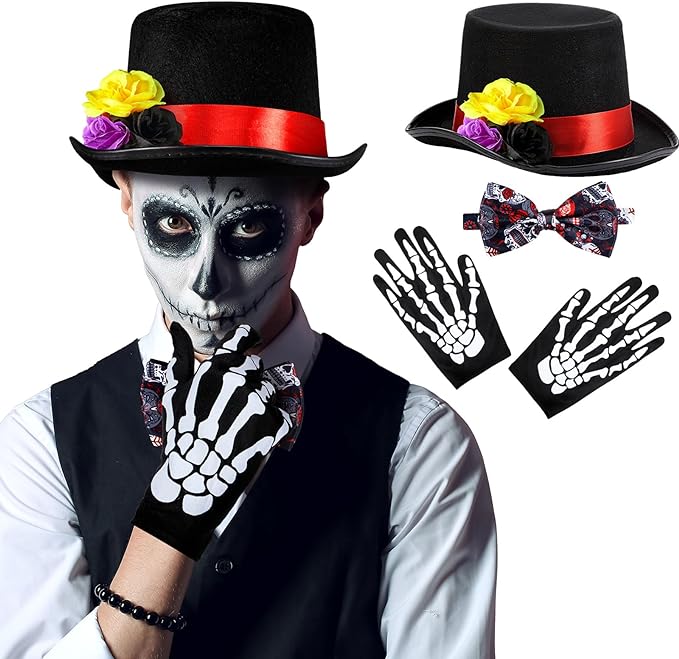Dia de los Muertos, or Day of the Dead, is a vibrant and deeply significant cultural festival that celebrates the lives of those who have passed. Originating from Mexico but celebrated in various forms across the world. This tradition blends indigenous Aztec rituals with Catholic customs. An essential part of this celebration involves the elaborate and symbolic act of dressing up, which not only honors the deceased but also reflects a unique artistic expression and cultural heritage. This article explores the history, significance, traditions. And contemporary practices of Dia de los Muertos dress-up customs.
Part I: Historical and Cultural Foundations
Dia de los Muertos dress-up: Roots in Ancient Traditions
Dia de los Muertos traces back thousands of years to indigenous rituals celebrating death as an integral part of life. Before Spanish colonization, the Aztecs and other native peoples had elaborate ceremonies for their deceased, believing that the souls of the dead returned each year to visit the living. Dressing up played a crucial role in these ceremonies, with participants adorning themselves in costumes and masks to honor the dead and facilitate the spiritual journey.
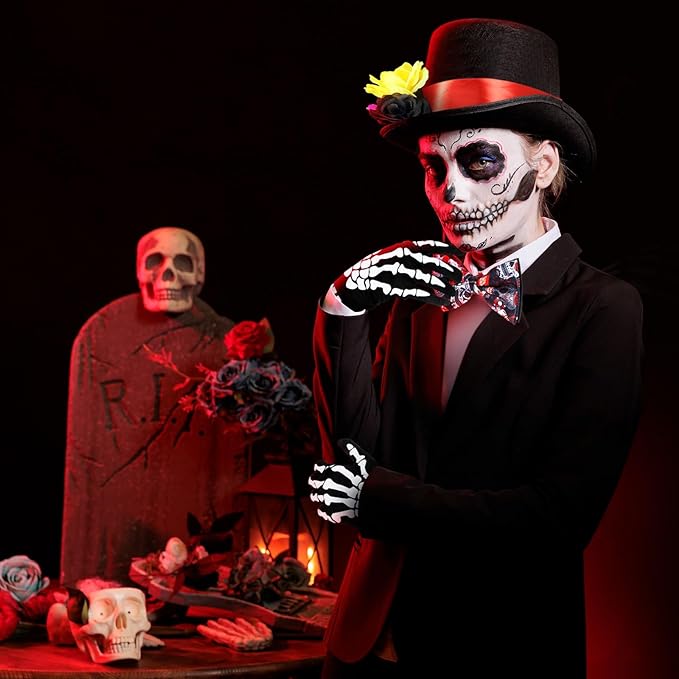
Syncretism and the Formation of Modern Traditions
With the arrival of Spanish colonizers and the imposition of Catholicism, indigenous traditions underwent a significant transformation. The contemporary Dia de los Muertos emerged as a syncretic practice. Blending Pre-Hispanic customs with Catholic observances like All Souls’ and All Saints’ Day. The dress-up traditions of Dia de los Muertos reflect this melding of cultures, incorporating elements such as Christian symbols, indigenous dress, and later, modern influences.
Part II: The Significance of Dress in Dia de los Muertos dress-up
Honoring the Dead
The primary purpose of Dia de los Muertos dress-up is to honor and remember the deceased. By wearing specific outfits, individuals pay homage to their ancestors and loved ones, telling their stories and keeping their memories alive. The act of dressing up can also represent the blurring lines between life and death. A core belief in the celebration where the dead are welcomed back into the world of the living for a brief period.
Expression of Identity and Creativity
Dressing up for Dia de los Muertos is also an opportunity for personal expression and creativity. Participants often spend months preparing their costumes, which can range from traditional to fantastical designs. Through makeup, clothing, and accessories, individuals can explore their identities, connect with their cultural heritage, and express their feelings about life, death, and remembrance.
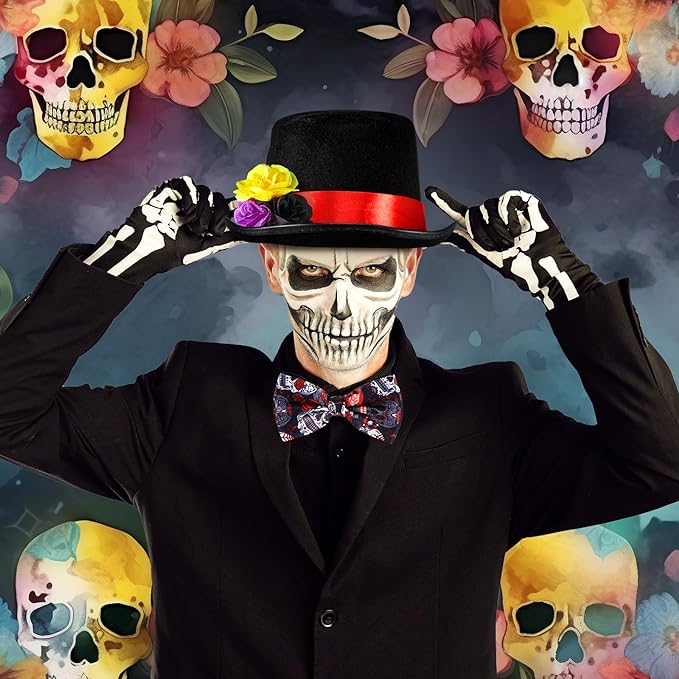
Part III: Traditional Dress-Up Elements and Their Meanings
La Catrina and the Elegant Skeleton
Perhaps the most iconic figure associated with Dia de los Muertos is La Catrina, a skeletal figure dressed in elegant attire that mocks the pretensions of the living. The costume typically involves elaborate makeup to create a skull-like appearance, combined with sophisticated dresses, hats, and accessories. This juxtaposition of death and refinement serves as a reminder of the universality of death and the temporary nature of life’s material concerns.
Floral and Symbolic Adornments
Flowers, particularly marigolds (cempasúchil), play a vital role in Dia de los Muertos dress-up, symbolizing the fragility of life. Costumes and hair are often adorned with real or artificial flowers, with marigolds believed to guide the spirits back to the world of the living with their vibrant colors and scent. Skulls, crossbones, and other symbols associated with death are also common elements, each carrying its own meaning and history.

Part IV: Contemporary Practices and Innovations
Fusion of Modern and Traditional Aesthetics
As Dia de los Muertos has gained international recognition, dress-up traditions have evolved to include a fusion of modern and traditional aesthetics. Contemporary influences, such as popular culture and fashion trends, have been integrated into costumes, resulting in innovative and diverse expressions of the festival’s themes. This blending of old and new maintains the celebration’s relevance and allows for a greater exploration of cultural identity.
Global Spread and Cultural Exchange
The globalization of Dia de los Muertos has led to its observance beyond Mexico, with communities around the world adopting and adapting its practices, including dress-up traditions. This cultural exchange has introduced new interpretations and meanings, while also raising questions about cultural appropriation. It emphasizes the importance of respecting and understanding the deep cultural significance of Dia de los Muertos, ensuring that its practices are celebrated with sensitivity and awareness.
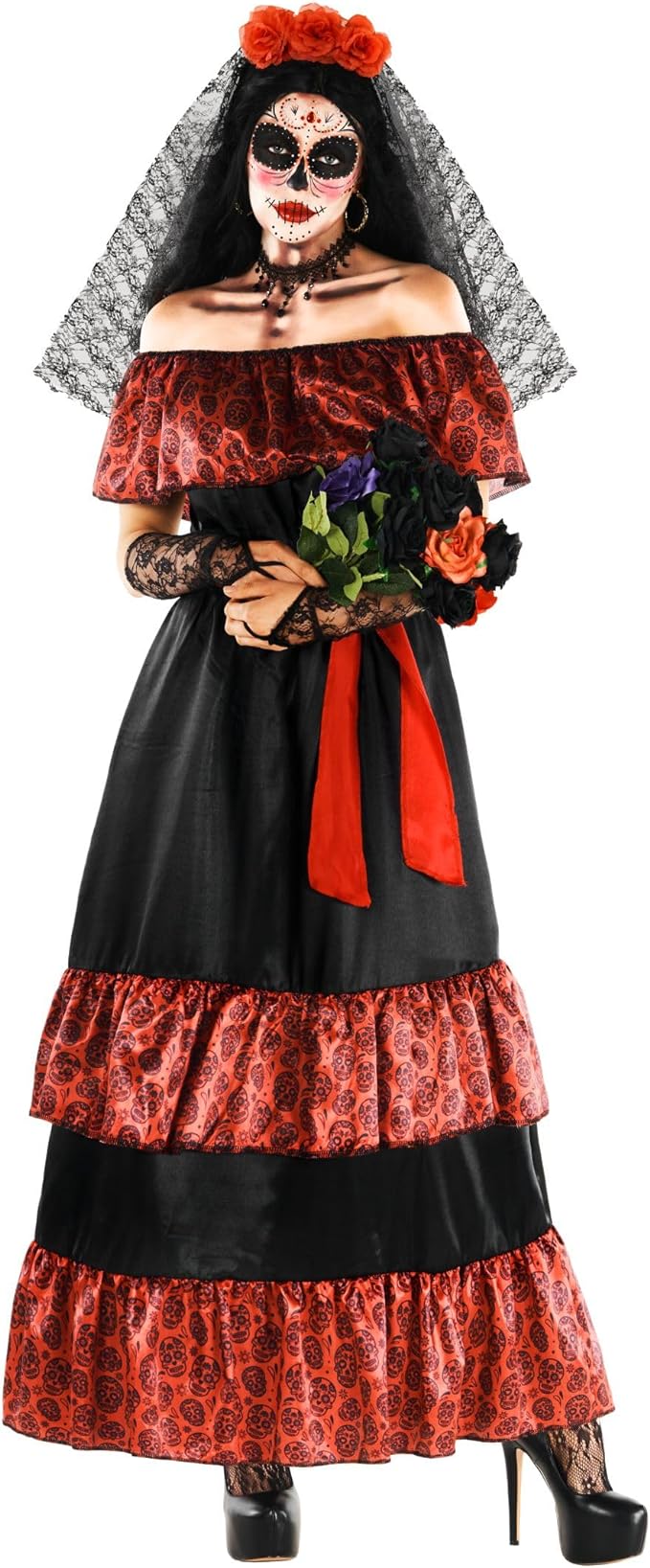
Part V: The Role of Art and Media in Shaping Dress-Up Traditions
Artistic Expression Through Costume
Dia de los Muertos dress-up is not only a cultural practice but also an art form. Artists and designers draw inspiration from the festival’s rich symbolism and history, creating costumes and makeup that are works of art in their own right. These expressions contribute to the vibrancy of the celebration and the ongoing evolution of its traditions.
Influence of Media and Popular Culture
Moreover, Media and popular culture have played significant roles in popularizing and shaping contemporary Dia de los Muertos dress-up traditions. Films, television shows, and social media have introduced the imagery of Dia de los Muertos to global audiences, often highlighting the artistic and visually striking aspects of the celebration. This exposure has led to increased interest and participation in the festival. Influencing the styles and methods of dress-up practices worldwide.
Promoting Cultural Legacy Through Visual Arts
Visual artists, illustrators, and photographers contribute to the preservation and promotion of Dia de los Muertos dress-up traditions by capturing the essence of the celebration through their work. Art exhibitions, photo essays, and illustrated books centered on Dia de los Muertos costumes. Makeup serve as important educational resources that bridge the gap between tradition and contemporary artistry. Simultaneously documenting the evolving practices for posterity.
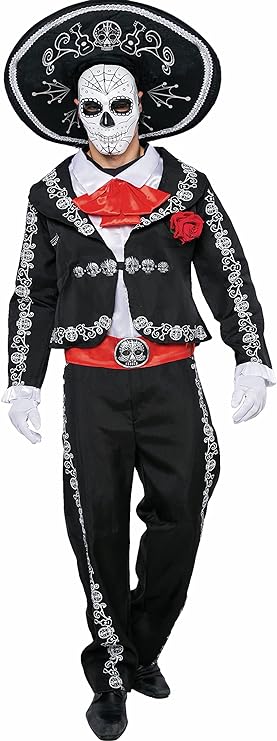
Part VI: Embracing Technology and Interactive Experiences
Augmented Reality and Virtual Dress-Up
Advancements in technology have added a new dimension to Dia de los Muertos dress-up traditions. Augmented reality (AR) and virtual reality (VR) applications allow users to experience the festival’s costumes and makeup virtually. Offering an interactive means of engagement without the need for physical dress-up. These technologies also provide platforms for experimentation with designs and the sharing of virtual celebrations, connecting people from different parts of the world.
Online Communities and the Sharing of Ideas
Online communities dedicated to Dia de los Muertos provide spaces for individuals to share their dress-up creations, exchange ideas, and offer tutorials. Social media platforms like Instagram, Pinterest. And YouTube brim with content related to costume design, makeup application, and the significance behind various adornments. This free flow of information democratizes knowledge about the festival’s traditions and fosters a sense of global community among participants.
